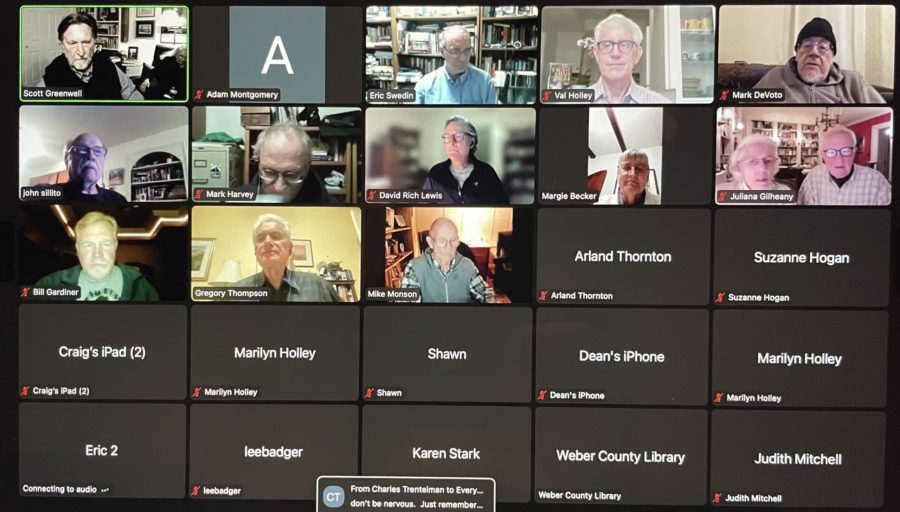When author John Draper set out to write “A Danger to God Himself,” he had one thing in mind—”To write a novel that would skewer Mormonism.” However, by the end of the process, his beliefs changed about his religion.
I sat down with Draper’s fiction novel to explore what made him change his beliefs. As someone who grew up in a predominately religious area with no religion myself, this book took me on a journey.
About eight years ago, Draper started inviting missionaries from The Church of Jesus Christ of Latter-Day Saints to his house and was perplexed by what they had to say.
“I was struck with the incongruity of it all,” he said. “These kids were so sure they knew the secret to happiness.”
When Draper set out to research the topic, he also researched the Latter-Day Saints religion and began to realize how different it was from his Protestant faith.
His novel sets out to explore the idea of schizophrenia in the LDS religion, particularly with missionaries. He began thinking of what would happen if a young missionary were to feel the effects of schizophrenia while on their mission.
Schizophrenia is a chronic, severe and disabling brain disorder that can cause people to hear voices, believe that other people are reading their minds and think others are plotting to harm them.
As Draper continued his research and his writing, he began to think differently about his subject. Draper realized that perhaps the way he approached his beliefs in God weren’t so different from the missionaries he let into his home.
Upon finishing the book, Draper said he felt liberated.
“I finished the novel in the light of this new perception,” he said.
While he set out to criticize the LDS religion, he really ended up writing about the fallacy of religious certainty, quoting Voltaire’s remark that “Doubt is uncomfortable, certainty is ridiculous.”
As someone who is not religious, it was easy to get into this book. It’s smart, well structured and the storyline is downright interesting. Even though I’ve lived in Utah my entire life, I never knew much about the religion, but Draper’s book offers real insight. I frequently found myself asking, “Is that what it’s really like?” When characters were going through their routines at church, discussing rules they follow or talking about how the religion affects their family life, I was genuinely interested because it was all so new to me.
While it fascinating to learn about a religion, it was often easy to get lost in the Bible quotations and other religious references. There are areas in the book that confused me, but there are many places where Draper takes the time to explain what a certain aspect of the religion means, which, to an objective reader, was very helpful.
The book takes on a very real quality throughout, and the characters are relatable. It doesn’t feel as if Draper is making up outlandish things that his readers can’t follow. No one is perfect, and the characters in this book exhibit that as well. Similarly, the vocabulary that Draper uses really adds to the characters’ personalities.
Like Draper said, the book seeks to explore the meaning of different aspects of religion, such as inconsistencies and questions about what they believe. The central characters often do this, and it’s engaging to read and share their thought processes. Also, Draper demonstrates some of the tension that comes with being affiliated with other religions and how the LDS church differs from others.
Overall, this book is a great read. If you’re looking for something to make you think, this definitely will. Draper also has a blog that explores other topics that go along with the book. Draper’s book is available on Amazon as a Kindle version or a paperback version.












